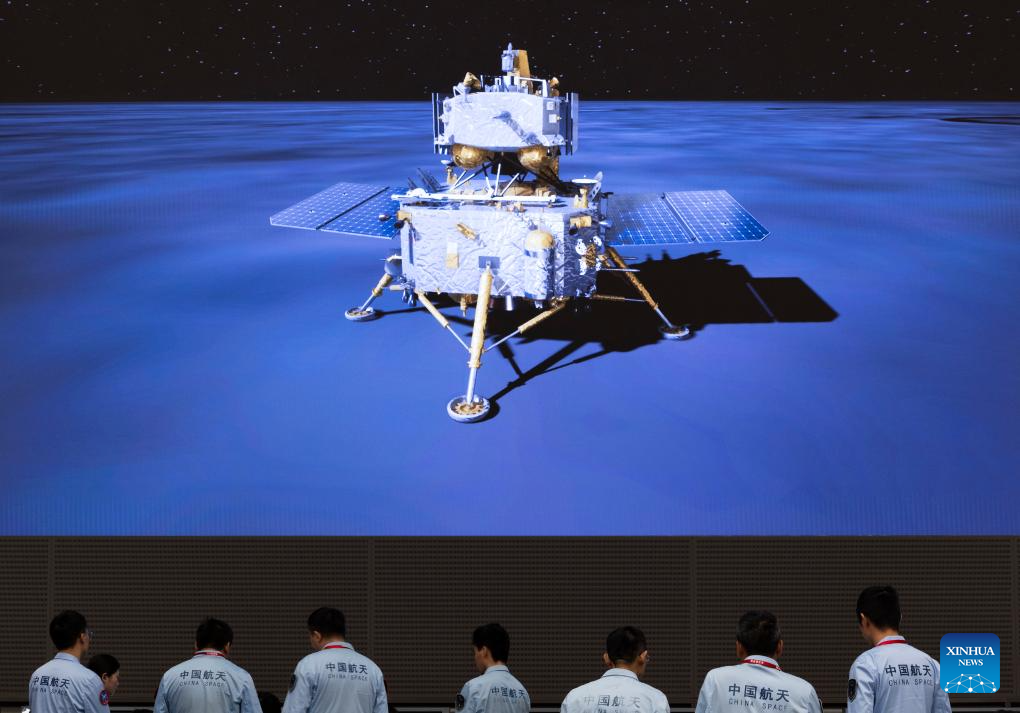The Chinese probe Chang’e-6 landed on the far side of the moon last weekend and immediately began collecting soil samples to bring to Earth. The journey to our planet began on June 3, with the successful liftoff of the Chang’e-6 ascent vehicle. If all goes well, this will be the first time a spacecraft has brought soil samples from the far side of the Moon back to Earth.
Chang’e-6 departed for the Moon on May 3 from Wenchang Cosmodrome in China. Days later, the probe reached lunar orbit, and the China National Space Administration spent the following days preparing for the probe’s landing. On June 1, the probe, which weighs 3.2 tons, ended up landing in the Apollo Crater in the South Pole-Aitken Basin, located on the far side of the Moon.
The lander is equipped with a drill and a shovel designed to load up to 2 kg of lunar material into a special container. This container is installed on the ascent vehicle, which can be seen at the top of the probe. On the night of June 3, CNSA confirmed that the ascent vehicle had left the surface with its payload.
A host of Chang’e-6 updates: At 2338 UTC on June 3, the ascender blasted off the top of the Chang’e-6 lander, carrying the samples into orbit. Here’s the action seen from the lander: pic.twitter.com/IcNUAqcFxS
– Andrew Jones (@AJ_FI) June 4, 2024
At this time, the vehicle increases the altitude of its orbit around the Moon to meet the service module. After being picked up by the service unit, an automated system will remove the container from the boarding vehicle. After this happens, the ascent vehicle will be launched into space. After that, the service module will remain in lunar orbit for a few more weeks until the start of its return journey to Earth, which is scheduled to begin between June 20 and 21. Upon arrival at Earth, on June 25, the atmospheric reentry module will separate from the service module for landing in Mongolia and will be collected by the CNSA.
Here’s a look at the sampling process from the past two days, since Chang’e-6 touched down late on June 1 UTC. pic.twitter.com/jw2DlPToVf
– Andrew Jones (@AJ_FI) June 4, 2024
Naturally, the scientific community is eager to examine the materials that the probe will bring to Earth. Apollo Crater is one of the oldest and deepest craters on the Moon. Soil samples may contain material sourced from the deepest regions of the Moon’s crust, and further study of the South Pole-Aitken Basin could help scientists understand why soil properties on the visible and far side of the Moon differ and how the planets. The moons were formed at the beginning of the solar system.
This is a historic mission because it is the first time soil samples from the far side of the Moon have been sent to Earth, but it is also of great importance to the aspirations of China’s space program. By 2030, China wants to send humans to the moon, and the technologies used on Chang’e-6 could help design vehicles used for future manned missions. China also wants to launch a similar mission to Mars, Tianwen-3, in 2030, and Chang’e-6’s performance could certainly influence a future Mars mission.

“Friendly zombie fanatic. Analyst. Coffee buff. Professional music specialist. Communicator.”


